-
Content Count
3,509 -
Joined
Posts posted by SilverCreek
-
-
21 hours ago, clip said:Recovering from some shoulder issues this summer I switched to a 3wt and dry flies, I may not go back . So now I have started tieing for next season and parachute flies are on my list, making the post hasn't been my problem but trying to figure out how thick(wide) to make them has. Is there a rule of thumb for different hook sizes? I'm using FTD Congo hair fibers (EP fibers) for the post because I have a lot and in different colors so I can adjust as needed. Will a fatter post give better flotation or Is thinner better. Probably seems like a trivial question but before I tie up dozens I'd like to figure it out.
Height of floatation of parachute fly depends on 3 main things:
1. The length of the hackle fibers
2. The way the hackle is wound around the post.
3. How the hackle is tied off.
Examine a dry fly hackle feather. You will see that it has a natural curve to the fibers and it has a shiny side and a dull side. The shiny side is convex and the dull side is concave.
When you decide to tie a parachute, you must decide whether you will tie the hackle so that the the tips of the fibers curve down toward the water and extend below the body of the fly (the fly will ride higher and the fly is supported on the tips of the fibers), or whether you will tie the hackle so that the tips of the fibers curve up away from the water (the fly will ride low with the body in the water and the fly supported by the shafts of the fibers, tips curving up and away from the water).
If you want the fly to ride low in the water, tie the hackle so that you rotate the hackle around the post, shine side down and dull side up, tips of the fibers curving away from the water.
If you want the body to ride higher, tie the the hackle so that you will rotate it around the post, shiny side up and dull side down, tips of the fibers curving down below the body of the fly.
You must also decide how to tie off the hackle and this will also determine whether the fly rides lower or higher.
To make the fly ride lower, tie the hackle off at the bottom of the post, below the last wind of hackle. Because the post tie off raises the hackle, the body will sink into the film.
To make the fly ride higher, wind the hackle as low on the post as you can and tie off behind the eye of the hook in traditional position. This lowers the hackle on the post and makes the body of the fly ride high on the film.
By combining these two techniques you can rotate the hackle shiny side down and tie off on the post to get a fly that has its body in the film; or rotate the hackle shiny side up and tie off behind the eye to get a fly that rides high on the film.
You asked about the how "fat" the post should be. Anything that is ABOVE the water adds weight to the fly and makes the fly sink lower in the water. So a fatter post requires more material a fly with an overly fat post will ride lower in the water.
-
5 hours ago, CDewberry said:Okay, wow that was something else! 😝 Broke thread, tied the hackle in wrong way, I substituted. Dang, whip finishes look easier on YT! Tied on a Togen's Size 12 3X Streamer with a 3.2mm brass bead, some antron chenille, and pearl flashbabou. Pretty sure the tail is too long. I can just pinch it off right? Please critique. Thanks.
1. The fly is tied on the wrong hook. It should be a 3XL 2XH hook,
2. It looks like you clipped the hackle fibers - that are not naturally tapered.
2. Tail is too long which will lead to strikes that are behind the hookpoint. These are called "short strikes."
Take a look at the instructions below.
https://flyfishingthesierra.com/woolly_bugger.htm
-
On 10/5/2023 at 9:31 PM, Gene L said:I can't do it. I've seen the videos and my fishing pal can roll cast like nothing. I've watched him do it and simply can't straighten the line out. It rolls, then lies in a puddle in front of the rod. If anyone has any suggestions, I'm all ears.
1. You may be "aiming" too high by stopping the rod too early in the rod stroke.
2. You need to practice ON WATER so the rod can load properly. On water, there is adhesion between the fly line that is laying on the water and the water surface. This helps load the rod by forcing it to bend to break the water tension on the line.
3. If you must practice on grass, make a "grass leader" that mimics the drag of surface tension.

Instruction for making a grass leader is in this issue of "The Loop" on page 4.
https://www.flyfishersinternational.org/Portals/0/Documents/Casting/The Loop/1998.SUMMER.LOOP.PDF
If you still are not able to roll cast, start with a side arm roll cast. If you are right handed, stand sideways with with your left side facing the direction you want to cast. Start the cast with the rod parallel to the water or ground. Draw the rod backward to your right side parallel to the water/ground behind your right side and then cast it forward (toward your left side) in an oval loop.
Once you are successful with a sidearm roll cast, gradually start increasing the oval cast and you will be "roll casting" side arm over your head. You now have the feel and timing of an overhead roll cast. So try doing it facing forward.
-
Let me be the first to welcome you!
-
-
For selecting deer and elk hair see my guide:
-
I provided the link for you.
https://youtu.be/8Xfsfrjur08?si=vTHqsgBzWCRwLtJE&t=11
Here is the finished fly
I do have a couple of suggestions for improvements on the tying technique.
On a size 22 fly, a problem is the narrow hook gap which is further narrowed by the dubbing. I suggest using a 2XS (extra short) hook. The Daiichi 1640 is 2 XS and made of standard gauge wire. So a size 20 would be the length of a size 22 BUT it would be made of size 20 wire so for it's length of a size 22, the wire would be 2 XH (2 extra heavy wire). It is a strong hook and is less likely open up.
Secondly, a parachute fly is NOT a dry fly. The hackle is ABOVE the fly body so the fly boy lies IN THE FILM. The parachute is actually a emerger pattern.
Because the hackle on a parachute is above the body, the body actually rides lower and in the film. According to my friend and instructor Gary Borger, the author of Designing Trout Flies, the parachute is actually a stage 3 emerger pattern.
https://www.garyborger.com/2016/09/09/parachute-flies-stage-3-emerger/
https://web.archive.org/web/20101230025309/http://www.flyfisherman.com/content/film-flies
"TStage 3. The insect pulls its head out of the shuck, followed almost immediately by the legs. At this point it enters stage 3, which is matched perfectly by the universal emerger: a Parachute Adams (or other fly with an upright parachute post such as the Klinkhåmer). [See “The Klinkhåmer Special” in the Dec. 2006 issue for more details. The Editor.]
All three of the surface-emerging insect groups look the same during this stage. That’s why the Parachute Adams is the world’s number 1 dry fly: it matches any mayfly, caddis, or midge in stage 3.
Most fly fishers think of the Parachute Adams as an adult dun imitation, but in reality it is an emerger. In stage 3 the nymphal or pupal body is just under the film and the legs are spread out on the surface to support the body. The body sticks almost straight up, with the wings plastered tightly along the top of the thorax as they continue pulling up and out of the wing pads.
Light reflecting off the upright body with the wings plastered tight along the top, gives the emerging insect a shining, light-colored look.
Still not convinced? Toss a Parachute Adams in a glass of water and view its position."
Way back in the 1980's on the Flyfish@ mailing list, there were discussions about the fact that the parachute fly is not an adult mayfly pattern.
The horizontally wound parachute hackle is also different from the palmered hackle of the Catskill dry fly. Dry fly hackle is NOT straight. It has curve. There is a concave side (dull side) and a convex side (shiny side). One must decide whether to wind the hackle with the concave or convex side facing down. If the concave side faces down, the hackle tips curve down TOWARDS the water and the fly will ride higher than if the convex side faces down.
I want my parachute flies to ride lower in the film and imitate an earlier or trapped in the film emerger so I wind the hackle convex (shiny) side down so the hackle tips curve up and away from the water. The fly then lies LOWER in the film as a trapped emerger does.
I have discussed this in detail in this previous post from from 2018.
-
-
When I was an undergrad at Stanford University back in the 1960s, Hughes Aircraft Company (a defense, space, and technology company founded by Howard Hughes) hired me during summer break to program mainframe computers in both Fortran 4 and Basic. So I have been in computer technoolgy for a long time.
ALL Hard drives whether internal or external will eventually fail.
An automated backup system connected to an external hard drive like the Apple computer's Time Machine or a cloud backup system is the best.
Time Machine even allows the user to recover files that were accidentally deleted.
https://support.apple.com/en-us/HT201250
And if when you replace your computer with a new Mac, you can automatically configure and move all the files from the old computer to your new computer. Or from the time machine external hard drive to you new computer. Everything is automated.
My computer has an internal solid state drive so the data does not get "fragmented." So it boots up faster and accesses data instantaneously. Since there are no moving parts in a SSD, it rarely suffers a "disk crash." They are more expensive at first but are well worth it.
https://www.techtarget.com/searchstorage/definition/SSD-solid-state-drive
https://www.sciencedirect.com/topics/computer-science/disk-defragmenter#:
If you have a standard hard drive you should defragment it so that your computer boots up faster and can access programs and data faster. It will also prolong the life of your hard drive.
https://www.toptenreviews.com/best-disk-defragmenter-software
-
5 hours ago, Gene L said:Renzetti vises have an adjustment where they will only rotate in one direction, which allows the vise to index. This setting can easily be adjusted out, It's annoying, but some like this feature.
Do you have link on the Renzetti site that explains this function? I have a Renzetti Traveller and there is nothing in the vise instructions that came with the vise that mentions or explains how to go from one direction to both direction rotation.
I have instruction sheets for both the 2000 and 2200 series Travellers.
Do you instructions on how this is done?
-
The Renzetti traveller will have an O ring on it. It is blue on the image below.
Does your vise have that O ring?

Other "knock off" vises that look like a Renzetti Traveller like the Kingfisher may not have the O ring.
https://www.amazon.com/Kingfisher-Fly-Fishing-Blackfoot-Rotary/dp/B0C2DFBJP4/
-
Looks like a good pattern
-
2 hours ago, Mark Knapp said:Yes you are correct sir. I tied smaller versions for them thanks, I also put the wing up on them. Not that the fish care.😁
My favorite pattern for the Blue Damsel is the Gary Borger braided butt damsel pattern using Cortland braided butt mono for the body. Color the mono with blue art marker and use a black sharpie for the black stripes.
I think you can adapt your pattern to use the wing as tied on the Boger pattern below. He uses hackle and ties it parachute style around a blue synthetic post and then fold the post over as in the pattern listed below.

http://www.garyborger.com/flies-and-fly-tying/braided-butt-damsel/
You can buy the Cortland 50 LB braided butt material at Trident
https://www.tridentflyfishing.com/cortland-braided-mono-looping-material.html
-
-
Years ago, Colorado discovered that 12 of their 15 fish hatcheries were infected with Whirling Disease.
Colorado depends on stocking to keep their trout fisheries functional and fishing license sale revenues high.
Guess what they did? Instead of destroying the trout they decided to stock them in the fisheries that already had WD DESPITE evidence that this would increase the load of WD in the watershed and spread the disease to the trout that were still uninfected.
""Parasite dose strongly determines the severity of whirling disease, which generally increases with the number of triactinomyxons the fish encounters (Hoffman 1974; O’Grodnick 1979; Markiw 1991, 1992a, 1992b; Hedrick et al. 1999a; Thompson et al. 1999; Densmore et al. 2001; Ryce et al. 2001; Ryce et al. 2004; Ryce et al. 2005)."
Subsequent to Colorado's stocking, researchers found that WD infection in the downstream brown trout population had increased.
The solution for Virginia, besides closing and sterilizing the hatcheries, is the importation of DeSmet rainbow trout from Montana which are immune to WD. This resistant strain was found by Montana Fisheries biologist Dick Vincent, who is responsible for turning the Madison River from a stocked fishery to a healthy self sustaining trout fishery.
"It's truly remarkable," said Vincent. "A decade ago, whirling disease had wiped out 90 percent of the Madison's rainbow trout. Today, we have a population that's highly resistant and bouncing back quite nicely." Vincent is recently retired from his longtime post of whirling disease coordinator at the Montana Department of Fish, Wildlife and Parks. Never in his wildest dreams did he imagine that before he stepped down he'd see Madison River rainbow populations at 70 percent of their historic numbers....
Vincent was an FWP biologist back in 1991 when he first noticed that the Madison's young rainbow trout seemed to be dying off. He scratched his head a bit, nursed some quiet suspicions, kept careful track of the numbers.
But years passed, and it wasn't until 1994 when he finally put a name to the problem - whirling disease. That's what they called it down in Colorado, where rainbows and other salmonid fish were circling the evolutionary drain....
Rainbow trout are not native to Montana. They came from California, a century ago and more, sloshing along the rails in water-filled milk jugs. At the time, a rainbow was a rainbow was a rainbow, despite the fact that distinct sub-species came from distinct watersheds.
One of those coastal watersheds - no one now knows which one - provided the rainbow trout that arrived at Wyoming's DeSmet Reservoir, out near Sheridan, back in the early 1890s.
Eventually Wyoming's fishery biologists killed off the DeSmet strain, in favor of a rainbow easier to catch, but not before Dick Vincent got his hands on a few.
In 1977, Vincent trucked a load of Wyoming's DeSmet rainbows into Montana's Willow Creek Reservoir, near the tiny town of Harrison. That was long before the disease, and Vincent just wanted some good sport fish for the lake.
But the whirling disease parasite eventually arrived at the reservoir, too, "and it did wreak a bit of havoc, but not nearly as much as we expected."
That's because 30 percent of those wild DeSmet rainbows tested naturally resistant to the parasite. Everywhere else - including the Madison - only 1 percent of fish showed any resistance; which is why, in some Colorado rivers, some 98 percent of rainbows have been wiped out by whirling disease.
Today - what with the California roots lost to history and the Wyoming fish killed off - Montana remains the last known home of DeSmet rainbows. They persist only in Willow Creek Reservoir, and in a single high-mountain wilderness lake - and in both places they have proved highly resistant to whirling disease, killing the parasite before it burrows through the skin.
And although he has no definite proof as yet, Vincent is convinced their genetic heritage survives in one other river - the Madison. Perhaps, he said, they arrived by way of Hebgen or Ennis lakes, where a few Harrison fish were later stocked.
"Personally," he said, "I'm pretty sure some of those DeSmet fish escaped from Harrison and ended up in the Madison. Then evolution went to work, and selected out the ones that can handle the disease."
At Willow Creek Reservoir, where a solid DeSmet population initially proved 30 percent resistant, many rainbows died. But those that survived passed their resistance on to their offspring, and now some 98 percent have resistance.
Down in the Madison, where only a few escaped DeSmet fish are thought to have lived among other rainbows, just 1 percent of the fishery showed initial resistance. The fishery collapsed, with whirling disease claiming all but 10 percent of the river's rainbows. But again, with the presumed help of a few DeSmet genes, the survivors passed on their good fortune and now 95 percent test resistant.
"They're very well recovered from the darkest depths of the whirling disease," Vincent said. "The Madison is a surprising success story."
It is, he said, the only Western river known to have recovered on its own.
Vincent has tried to track the genetic history of those DeSmet rainbows, hoping to unlock the clues of disease resistance, but historic records are incomplete at best. He's not sure where in California they came from, for instance, or even if they survive there today.
"It's a real puzzle, actually."
He's also not sure how the DeSmet rainbows will fare in the long run, as they obviously are not evolved for the particulars of the Madison. How will they deal with seasonal water level changes, for instance, or warm water flows?
"That's one area we'll need to look at," he said. "Just who are these new Madison River rainbows? Because genetically, they sure aren't the same fish that were there 20 years ago. There's been a genetic bottleneck. Will evolution iron things out? I guess only time will tell."
That's why he's still advising caution, before biologists rush out to stock Montana streams with Harrison's DeSmet fish. Down in Colorado, and in Utah, where whirling disease has hit so hard, they've already started introducing Harrison's fish in hopes of also introducing parasite resistance.
In Montana, however, "it's not that bad, yet," Vincent said. "We know we have the stock, and we know it's not going anywhere, so let's not be hasty. Let's do some basic research before we go moving fish around willy-nilly."
After all, he said, it was moving species around that got us into this mess in the first place.
"The Madison is coming back," Vincent said. "Let's see how that turns out over time, before we take any drastic steps."
-
Yellowstone Angler Tippet Shootout shows that knot strength depends on the tippet material used and the X size of the tippet material used when different materials are compared. Some knots are are weaker or stronger than other knots depending on the tippet material and X size.
The Davy is one of the weaker knots in this test.
https://www.yellowstoneangler.com/gear-review/tippet-shootout/
Here's what they say about the Davy knot:
"The Davy knot was developed for one purpose – speed. In fly fishing competitions, lost time means lost fish, and often lost competition. Once you practice this knot it can literally be tied in a few seconds. Once your muscle memory is trained, you can even tie the knot without looking at it, allowing you to watch for rise forms. It also uses up very little material. Like the Orvis knot, when you pull this tight there is less friction.
The only problem we found with the Davy knot was its knot strength. Reportedly, it is supposed to test nearly 100% break strength. Our data revealed it breaking strengths to be reduced by as much as 40-50 percent. For example, Rio Fluoroflex 2X has a straight pull break strength of 11.19 pounds. After averaging 6 Davy Knot breaks (or slips), breaking strength was reduced to 5.32, which is roughly 52 percent weaker.
Bottom line: This knot is super fast and wastes very little material, however it tested weaker than a wind knot. Unless you are in a competition where time is of the essence, (or fishing to 8 inch trout) it only makes sense to pick a stronger fly knot "
-
The listing is an example of the "greater fool theory" in action.
https://en.wikipedia.org/wiki/Greater_fool_theory#:
https://www.investopedia.com/terms/g/greaterfooltheory.asp
-
You can buy 3 new Renzetti Master Vises at that price.
-
^^^^ What he said.
I also assume that the repair person has to drive his service truck to your home to do the job. If that is true, I think $75 is quite reasonable.
If you have to take the appliance to his shop and leave it there, then it is expensive.
So which is it?
-
On 10/13/2023 at 8:38 PM, Bazzer69 said:whatever happened to page 2 ?
I would like to get in touch with Charles EvNS OF CAE, has anyone have any contact info?
Thanks
Barry
Software developers definition of a "bug"....
It's not a bug, it's a "feature."
-
18 minutes ago, Bazzer69 said:whatever happened to page 2 ?
I would like to get in touch with Charles EvNS OF CAE, has anyone have any contact info?
Thanks
Barry
https://www.flytyingforum.com/index.php?/topic/88001-caengineering-vise/page/2/
-
Flex Hex before I shortened the wing. The body folds up so that even smaller trout will be hooked when using this fly.

The Flex Hex is the best pattern for the Hexagenia Limbata hatch that I have been able to find and I've tried a number of them from traditional patterns tied on straight hooks to extended body patterns tied on shorter hooks. Both have problems hooking up on all takes.
The crosshatched brown thread over the fly body simulates brown markings on the natural below.

The problem is that the naturals are so huge that "stiff" patterns are often pushed out of the way on strike. Unlike the natural which folds up, the stiff tail and body of traditional patterns do not and the fly just gets pushed out of the way unless it is a perfect take.
The Flex Hex solves this problem by putting a mono to mono loop hinge in the middle of the pattern and even smaller fish can take in this pattern. It actually fold ups and offers less resistance than the natural.
Another advantage of teh Flex Hex is that the mono hinge allow the two body sections to move separately from each other. The natural hexs wriggle and flop around when emerging and when fished in the riffles, the Flex Hex hinge allows the two sections to move independently simulating the natural.
I've modified this pattern to a parachute which produces a more realistic impression on the water and which can easily be changed into a spinner by cutting off the post. The naturals have a mottled brown body with a yellow abdomen and the cross hatched brown thread on yellow mimics this.
Parachutes are best tied with one size longer hackle than the traditional hackled flies and getting hackle that is long enough for a flex hex is difficult. Modern genetic capes have longer feathers with denser hackle but the hackle length is shorter. I use my old Metz necks from the 1980s for the size 2 hackle that I use for this pattern.
Here is John Nebel's Original Flex Hex Pattern:
https://globalflyfisher.com/patterns/the-flex-hex
Write up on the pattern.
https://globalflyfisher.com/patterns/doing-the-limbata
-
-
I have a Tracphone that costs me about $100 a year. I just keep it with me for emergencies. $99 a year for 400 minutes. I never use the unused minutes so they carry over. I must have over 3000 minutes.
https://www.tracfone.com/plans/basic-phones-full-year-plan-400-minutes



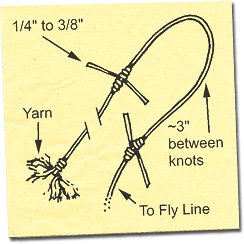


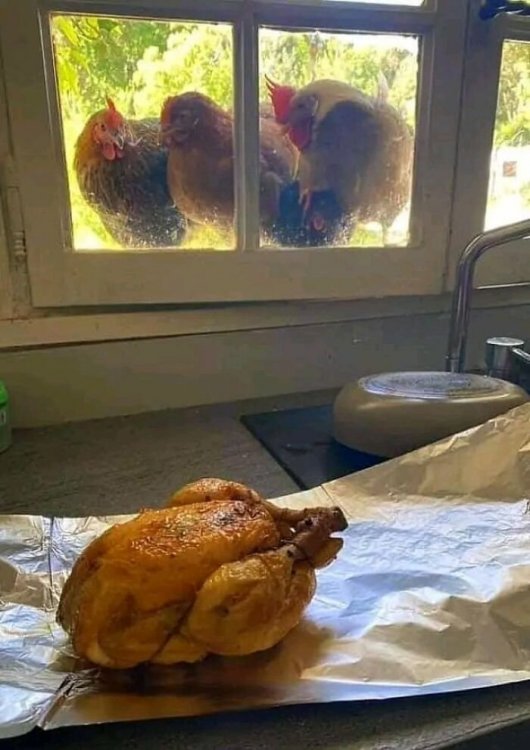
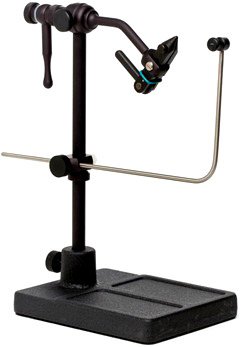
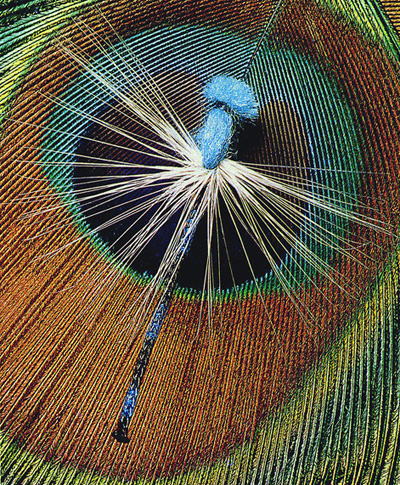

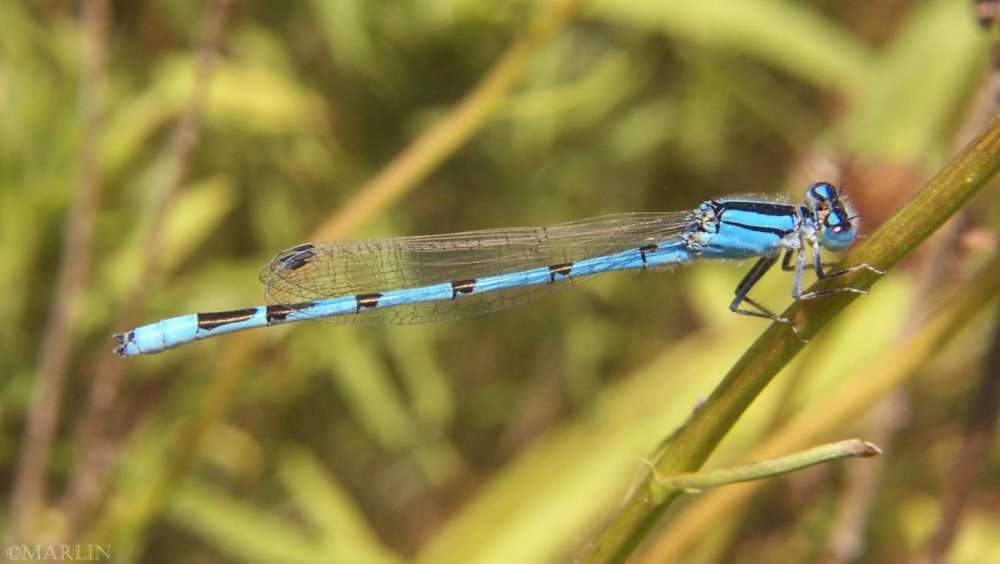
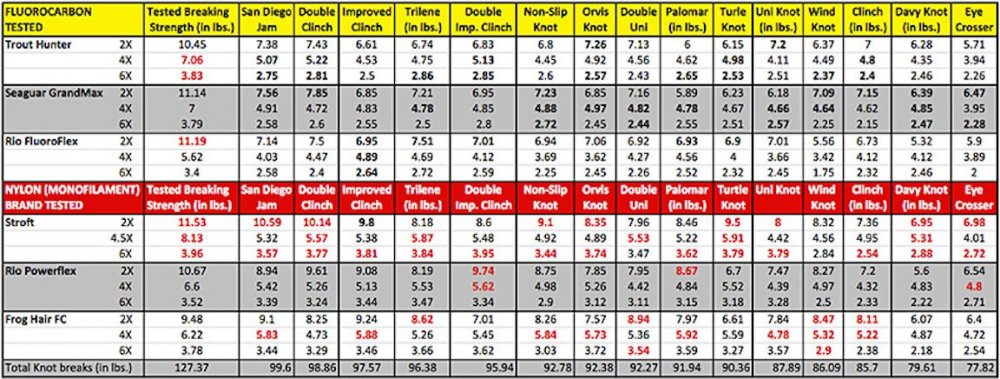



Para posts (does size really matter)
in The Fly Tying Bench
Posted · Report reply
You can't get the parachute dry fly to both sit deeper in the film and have max floatation using the same fly. If you find a way, let me know.
You need a different fly than a standard parachute. You need a Klinkhammer style of fly which is really an emerger pattern.
https://thefeatherbender.com/klinkhamer-fly-special/